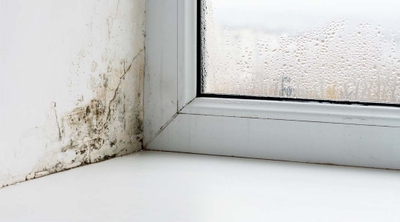What to know about lead paint removal
3 min read
Lead-based paint is toxic and a common hidden safety hazard in older homes. Removing lead paint requires extreme care and caution to prevent lead dust and flakes from contaminating your home and making people sick. Lead had been used in paint for hundreds of years until researchers identified health hazards linked to lead exposure in the mid-20th century. According to the US Centers for Disease Control and Prevention (CDC), these hazards include anemia, kidney and brain damage, and death. Lead also crosses the placental barrier, meaning that if pregnant women are exposed to lead, it can impair the baby’s nervous system development. It’s also hazardous to children under the age of six.
Depending on state and municipality laws, homeowners can potentially tackle lead-based paint removal as part of a DIY home renovation. But it’s a good idea to work with professionals trained to remove lead paint safely.
The Environmental Protection Agency (EPA) strongly recommends that homeowners hire a certified inspector and contractor to handle lead paint testing and abatement. Removing lead paint safely depends on controlling the work area to contain, minimize, and clean all lead dust, debris, and residue and dispose of them safely.
How do homeowners test for lead paint?
The EPA currently recognizes three types of lead test kits that comply with their RRP Rule. However, the EPA only considers test results with these kits reliable when Certified Renovators or trained professionals use them.
Can a homeowner remove lead paint?
According to the Environmental Protection Agency (EPA), the federal Lead Renovation, Repair and Painting (RRP) Rule “does not apply to homeowners renovating, repairing, or painting their own homes.” However, states and municipalities may have stricter DIY lead paint removal laws. Check with your local environmental agency or health department for specific regulations about demolition and disposal where you live. Although the EPA guides homeowners on removing lead paint, they recommend working with a certified environmental contractor.
How to remove lead paint
Lead paint in old houses doesn’t always require removal — it depends on the condition of the painted surface.
- Encapsulation: If the lead paint is intact, you may apply a paint-like sealant to keep the lead paint from flaking, leading to dust inhalation or paint chip ingestion.
- Enclosure: Enclosing or covering a surface coated with lead paint, such as installing a layer of drywall or siding over the affected area, can safely contain lead paint.
- Removal: More labor-intensive (and more costly) and a more permanent solution is removing the lead-based paint from surfaces.
- Replacement: Replacing the lead-contaminated surface is usually the most expensive option for lead abatement cost. If you have window or door trim with lead-based paint, this will involve removing it, replacing it, and re-painting the trim with modern lead-free paint.
How to remove lead paint from walls and other surfaces
The EPA provides a list of safeguards for homeowners tackling lead paint abatement projects themselves. The following is an overview of the most common considerations — check with state and local agencies for their specific guidelines.
Safe setup
The area where the workers are doing the cleanup work should be set up to keep any lead dust or debris contained in the work area and keep out people not involved in the cleanup.
Protection
Workers should wear respiratory protection and disposable personal protective equipment, including shoe covers and a painter’s hat, to limit potential contamination.
Minimizing dust
Wet sanders and misters, certified high-efficiency particulate absorbing (HEPA) vacuums, heavy plastic sheeting, and heavy-duty disposal bags help reduce and control the spread of dust in the work area.
Clean the work area
At the end of each day and the end of the job, clean up dust, debris, or residue. And clean all surfaces thoroughly at the end of the job.
Contain the trash
Workers should bag and seal all dust, debris, and objects contaminated by dust and debris before it is removed from the work area.
Once the lead paint removal is complete, some projects (for example, lead removal in housing where federal assistance is received) require clearance testing by a Certified Lead Inspector, Certified Lead Risk Assessor, or Certified Lead Sampling Technician before people can reoccupy the living spaces.






